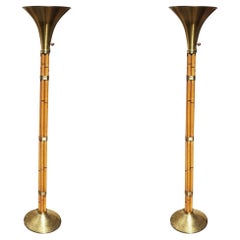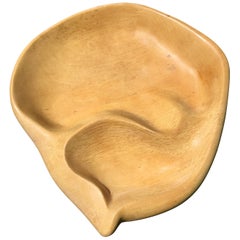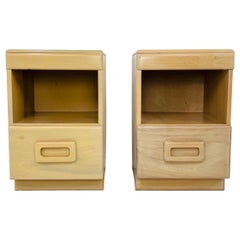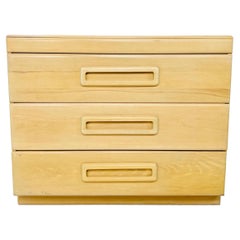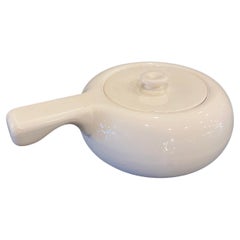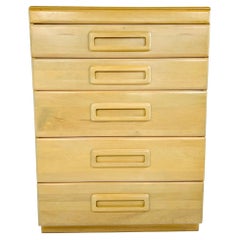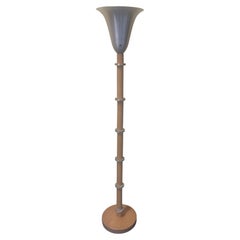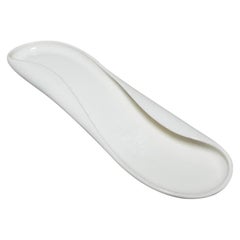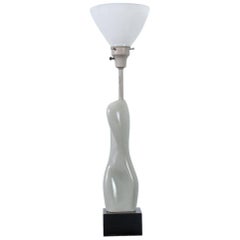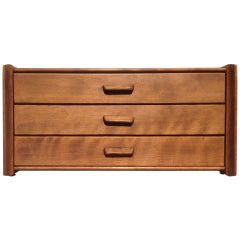Russel Wright On Sale
Vintage 1930s American Mid-Century Modern Vanities
Maple
Vintage 1950s American Mid-Century Modern Floor Lamps
Rattan
Vintage 1930s American Mid-Century Modern Platters and Serveware
Maple
Mid-20th Century North American Mid-Century Modern Dressers
Wood
Mid-20th Century North American Mid-Century Modern Dressers
Wood, Maple
Vintage 1940s American Mid-Century Modern Platters and Serveware
Ceramic
Vintage 1940s American Mid-Century Modern Platters and Serveware
Ceramic
Mid-20th Century Mid-Century Modern Dressers
Wood
Early 20th Century North American Art Deco Floor Lamps
Aluminum
Mid-20th Century American Mid-Century Modern Rocking Chairs
Maple
Vintage 1940s American Mid-Century Modern Platters and Serveware
Earthenware
Recent Sales
Vintage 1940s American Mid-Century Modern Table Lamps
Metal
20th Century American Desk Accessories
Walnut, Wood
Vintage 1940s American Mid-Century Modern Platters and Serveware
Earthenware
Mid-20th Century American Mid-Century Modern Lounge Chairs
Maple, Leather
Vintage 1950s American Mid-Century Modern Side Tables
Maple
Vintage 1950s American Mid-Century Modern Commodes and Chests of Drawers
Lacquer, Paint, Maple, Wood
20th Century American Modern Serving Pieces
Chrome
Vintage 1950s American Mid-Century Modern Rocking Chairs
Maple
Vintage 1950s American Mid-Century Modern Side Tables
Maple
Vintage 1940s American Mid-Century Modern Platters and Serveware
Pottery
Vintage 1950s American Mid-Century Modern Night Stands
Birch
Vintage 1950s American Mid-Century Modern Commodes and Chests of Drawers
Birch
Mid-20th Century American Mid-Century Modern Floor Lamps
Brass
Vintage 1950s American Mid-Century Modern Coffee and Cocktail Tables
Birch
Vintage 1940s American Mid-Century Modern Table Lamps
Aluminum
Mid-20th Century Mid-Century Modern Night Stands
Maple
Vintage 1930s American Mid-Century Modern Floor Lamps
Aluminum, Brass
Mid-20th Century American Mid-Century Modern Crystal Serveware
Crystal
Vintage 1950s American Mid-Century Modern Table Lamps
Aluminum
Vintage 1950s American Mid-Century Modern Table Lamps
Aluminum
Vintage 1950s American Mid-Century Modern End Tables
Maple
Mid-20th Century American Desks
Maple
Vintage 1950s American Mid-Century Modern Commodes and Chests of Drawers
Maple
Vintage 1940s American Mid-Century Modern Armchairs
Upholstery, Maple
Vintage 1940s American Table Lamps
Aluminum
People Also Browsed
Vintage 1950s American Mid-Century Modern Commodes and Chests of Drawers
Brass
21st Century and Contemporary Italian Art Deco Wall Lights and Sconces
Brass
21st Century and Contemporary Swedish Mid-Century Modern Table Lamps
Textile
2010s South African Minimalist Pedestals
Hardwood
Vintage 1940s American Art Deco Barware
Aluminum
21st Century and Contemporary French Brutalist Night Stands
Oak
21st Century and Contemporary Danish Mid-Century Modern Carts and Bar Carts
Steel
Vintage 1960s Danish Scandinavian Modern Night Stands
Teak
20th Century American Mid-Century Modern End Tables
Mid-20th Century American Mid-Century Modern Night Stands
Wood, Burl
Vintage 1970s Canadian Mid-Century Modern Night Stands
Chrome
Vintage 1940s American Serving Pieces
Mid-20th Century American Mid-Century Modern Decorative Bowls
Wood
20th Century American Mid-Century Modern Commodes and Chests of Drawers
Maple
20th Century American Mid-Century Modern End Tables
Maple, Birch
Vintage 1970s American Mid-Century Modern Night Stands
Wood
Russel Wright On Sale For Sale on 1stDibs
How Much is a Russel Wright On Sale?
Russel Wright for sale on 1stDibs
While industrial designer Russell Wright may be known to modern furniture enthusiasts for his streamlined end tables, dining chairs and other pieces, he is universally revered for a line of tableware he created called American Modern. Efficient, practical, and striking in their elegant forms and warm colors, the American Modern ceramic pieces, which included bowls, pitchers, dishes, and other items, became the best-selling dinnerware of all time. Today, vintage Russell Wright American Modern tableware is an evergreen favorite of art collectors and interior designers alike.
Born in 1904 in Ohio, Wright was surrounded by inspiration for the furniture he would one day design. He was raised in a Quaker household and grew up with the spare, meticulously handcrafted furniture for which the Quakers are known. As a young man, he studied art and sculpture at the Art Academy of Cincinnati and the Art Students League of New York, going on to study law at Princeton University in New Jersey. But Wright loved the arts and abandoned his pursuit of a law degree to create stage sets in Princeton and Paris alongside fellow noted designer Norman Bel Geddes.
In 1927, Wright married artist and sculptor Mary Einstein. Together, they moved to New York City, where Wright began to create sculptures. Mary convinced him to create metal bookends from his sculptures, and later, when he began to craft bar accessories from chrome, he turned to aluminum, a much cheaper material for the purposes of mass production (his barware was eventually included in the "Machine Art" show at the Museum of Modern Art in 1934, which was curated by Philip Johnson).
Mary worked on marketing Russell's products, successfully proposing everyday uses for Wright's beautifully designed housewares. She is said to have been a pioneer in the world of lifestyle marketing, coining the terms "American Modern" and "blonde" to describe the charming, light-colored maple furniture he created for Conant Ball, which was known at the time for its reproductions of American Colonial furniture.
While Wright had created some Art Deco furnishings for Heywood-Wakefield, it was this group of bedroom furniture for Conant Ball that got its name, American Modern, from Mary. Under her guidance, Wright's attractive, functional designs for the home gained renown, leading to commissions by prestigious companies like the Steubenville Pottery Company.
In 1935, Wright formed Russell Wright Associates with Irving Richards, an entrepreneur who had worked with Lightolier and would later establish Raymor. In collaboration with Richards, Wright debuted the first line of American Modern dinnerware in 1939, which was initially produced by Russell Wright Associates and then manufactured by Steubenville for two decades. The line sold over 200 million pieces during its 20 years of production. In 1955, Wright was selected by the U.S. State Department to research handicraft industries in Southeast Asia, a trip that influenced his later designs.
Throughout his life, Wright continued to design furniture and housewares, with the works' signature earth tones, curved forms, and clean silhouettes of his floor lamps, lounge chairs, and serveware remaining popular staples in American households. In his later years, he focused on designing and building his home, Manitoga, and working with the National Parks Service to develop the "Summer in the Parks" program.
Upon Wright's death in 1974, Manitoga was given to the Nature Conservancy. It was declared a National Historic Landmark in 2006 and today houses the Russell & Mary Wright Design Gallery, where many of Wright's works stand on permanent display. In 2011, stamps from the U.S. Postal Service featured Wright's image as one of the United States' twelve most influential industrial designers.
Find vintage Russel Wright lighting, seating, tables, serveware, ceramics and glass on 1stDibs.
A Close Look at Mid-century Modern Furniture
Organically shaped, clean-lined and elegantly simple are three terms that well describe vintage mid-century modern furniture. The style, which emerged primarily in the years following World War II, is characterized by pieces that were conceived and made in an energetic, optimistic spirit by creators who believed that good design was an essential part of good living.
ORIGINS OF MID-CENTURY MODERN FURNITURE DESIGN
- Emerged during the mid-20th century
- Informed by European modernism, Bauhaus, International style, Scandinavian modernism and Frank Lloyd Wright’s architecture
- A heyday of innovation in postwar America
- Experimentation with new ideas, new materials and new forms flourished in Scandinavia, Italy, the former Czechoslovakia and elsewhere in Europe
CHARACTERISTICS OF MID-CENTURY MODERN FURNITURE DESIGN
- Simplicity, organic forms, clean lines
- A blend of neutral and bold Pop art colors
- Use of natural and man-made materials — alluring woods such as teak, rosewood and oak; steel, fiberglass and molded plywood
- Light-filled spaces with colorful upholstery
- Glass walls and an emphasis on the outdoors
- Promotion of functionality
MID-CENTURY MODERN FURNITURE DESIGNERS TO KNOW
- Charles and Ray Eames
- Eero Saarinen
- Milo Baughman
- Florence Knoll
- Harry Bertoia
- Isamu Noguchi
- George Nelson
- Danish modernists Hans Wegner and Arne Jacobsen, whose emphasis on natural materials and craftsmanship influenced American designers and vice versa
ICONIC MID-CENTURY MODERN FURNITURE DESIGNS
- Eames lounge chair
- Nelson daybed
- Florence Knoll sofa
- Egg chair
- Womb chair
- Noguchi coffee table
- Barcelona chair
VINTAGE MID-CENTURY MODERN FURNITURE ON 1STDIBS
The mid-century modern era saw leagues of postwar American architects and designers animated by new ideas and new technology. The lean, functionalist International-style architecture of Le Corbusier and Bauhaus eminences Ludwig Mies van der Rohe and Walter Gropius had been promoted in the United States during the 1930s by Philip Johnson and others. New building techniques, such as “post-and-beam” construction, allowed the International-style schemes to be realized on a small scale in open-plan houses with long walls of glass.
Materials developed for wartime use became available for domestic goods and were incorporated into mid-century modern furniture designs. Charles and Ray Eames and Eero Saarinen, who had experimented extensively with molded plywood, eagerly embraced fiberglass for pieces such as the La Chaise and the Womb chair, respectively.
Architect, writer and designer George Nelson created with his team shades for the Bubble lamp using a new translucent polymer skin and, as design director at Herman Miller, recruited the Eameses, Alexander Girard and others for projects at the legendary Michigan furniture manufacturer.
Harry Bertoia and Isamu Noguchi devised chairs and tables built of wire mesh and wire struts. Materials were repurposed too: The Danish-born designer Jens Risom created a line of chairs using surplus parachute straps for webbed seats and backrests.
The Risom lounge chair was among the first pieces of furniture commissioned and produced by celebrated manufacturer Knoll, a chief influencer in the rise of modern design in the United States, thanks to the work of Florence Knoll, the pioneering architect and designer who made the firm a leader in its field. The seating that Knoll created for office spaces — as well as pieces designed by Florence initially for commercial clients — soon became desirable for the home.
As the demand for casual, uncluttered furnishings grew, more mid-century furniture designers caught the spirit.
Classically oriented creators such as Edward Wormley, house designer for Dunbar Inc., offered such pieces as the sinuous Listen to Me chaise; the British expatriate T.H. Robsjohn-Gibbings switched gears, creating items such as the tiered, biomorphic Mesa table. There were Young Turks such as Paul McCobb, who designed holistic groups of sleek, blond wood furniture, and Milo Baughman, who espoused a West Coast aesthetic in minimalist teak dining tables and lushly upholstered chairs and sofas with angular steel frames.
Generations turn over, and mid-century modern remains arguably the most popular style going. As the collection of vintage mid-century modern chairs, dressers, coffee tables and other furniture for the living room, dining room, bedroom and elsewhere on 1stDibs demonstrates, this period saw one of the most delightful and dramatic flowerings of creativity in design history.

